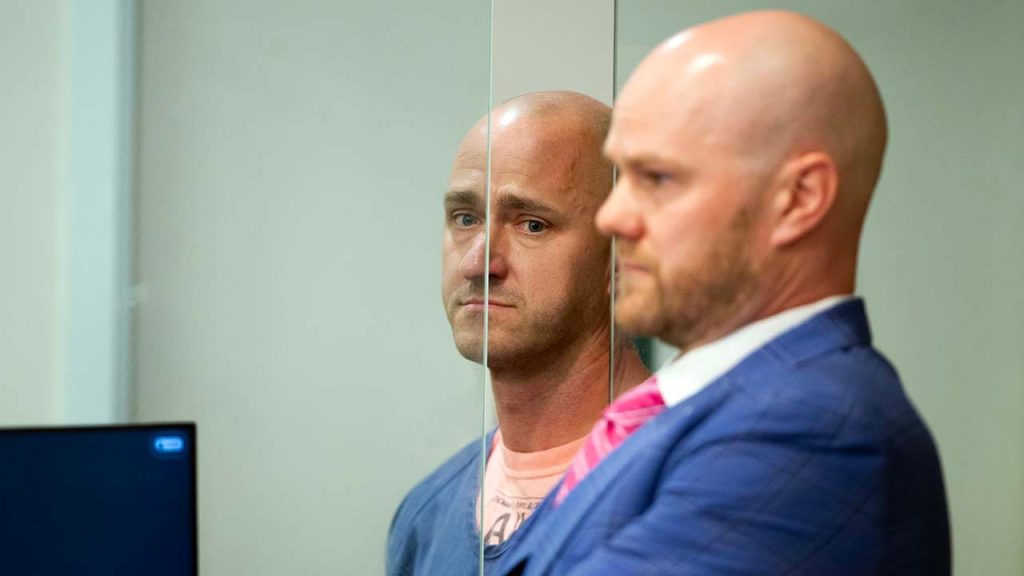Pilot’s Remorse: The Harrowing Story of a Flight Gone Wrong
In a solemn courtroom scene that marked the end of a disturbing aviation incident, former Alaska Airlines pilot Joseph Emerson has accepted full responsibility for his actions aboard a Horizon Air flight last October. Emerson, who attempted to disable the engines of the passenger aircraft while off-duty and riding in the cockpit, pleaded guilty or no contest to all charges on Friday. The pilot’s attempt to cut fuel to the engines of the flight, which carried more than 80 passengers from Everett, Washington to San Francisco, forced an emergency diversion to Portland. His actions potentially endangered dozens of lives, though thankfully the plane landed safely. “What Joseph Emerson did was reckless, selfish, and criminal,” Multnomah County Deputy District Attorney Eric Pickard stated, emphasizing how close the incident came to devastating not just the passengers but their loved ones as well.
The case’s resolution included a complex arrangement of state and federal consequences. In state court, Emerson received a 50-day jail sentence with credit for time served, along with five years of probation. His federal sentencing is scheduled for November, where his legal team will advocate for probation while prosecutors may pursue up to a year in custody. Throughout the proceedings, Emerson expressed profound regret: “It should not have happened, and I bear the responsibility for that.” This acknowledgment came alongside his explanation that he had consumed psychedelic mushrooms approximately two days before the flight, was grieving a friend’s death, and had gone more than 40 hours without sleep – factors that severely impaired his judgment but, as he admitted, “doesn’t make this right.”
The incident raises disturbing questions about pilot monitoring and psychological screening. According to Alaska Airlines, the flight crew had not observed any warning signs that would have prevented Emerson from accessing the cockpit. This raises concerns about protocols for detecting impairment in aviation professionals, even those not actively piloting the aircraft. The case has brought attention to the pressures facing pilots and the potential consequences when mental health issues remain unaddressed. At the time of the incident, Emerson claimed he believed he was dreaming and pulled the engine handles in an attempt to “wake himself up” – a terrifying miscalculation that could have ended in tragedy if not for the quick actions of the flight crew who restrained him.
For the passengers who experienced those terrifying moments in the air, the incident has left lasting trauma. One passenger, Alison Snyder, told the court she would never again feel as comfortable flying. “Mr. Emerson knew he was not fit to fly, a requirement for sitting in the cockpit,” Snyder stated. “Joseph Emerson’s behavior that day showed he lacks the judgment to be a pilot and should never be allowed anywhere near a flight deck ever again.” Her statement reflects the broken trust between passengers and the aviation professionals tasked with their safety, a relationship built on the expectation that pilots will exercise sound judgment at all times, whether on or off duty.
Emerson’s legal troubles stemmed from both federal and state charges – interfering with a flight crew at the federal level, and in Oregon, 83 counts of endangering another person and one count of endangering an aircraft. His acceptance of responsibility marks a significant shift from his initial not guilty pleas. During the hearing, Emerson attempted to find some redemption in his personal growth following the incident: “This difficult journey has made me a better father, a better husband, a better member of my community. Today I get to be the dad I was incapable of when I had to use alcohol to deal with life as life is.” His statement suggests that beyond the psychedelic mushrooms, he had been struggling with alcohol use as a coping mechanism for personal difficulties.
The case highlights several intersecting issues: the mental health challenges facing aviation professionals, the dangers of substance use, the importance of proper rest, and the absolute necessity of maintaining professional standards even when off-duty. While Emerson’s decision to take accountability rather than continue fighting the charges may provide some closure for those affected, the incident serves as a sobering reminder of how quickly things can go wrong when safety protocols are compromised. For the aviation industry, it underscores the need for vigilance in monitoring the wellbeing of all personnel with access to aircraft controls. For passengers, it reinforces both the vulnerability inherent in air travel and the remarkable systems and procedures that prevented this incident from becoming a tragedy.


